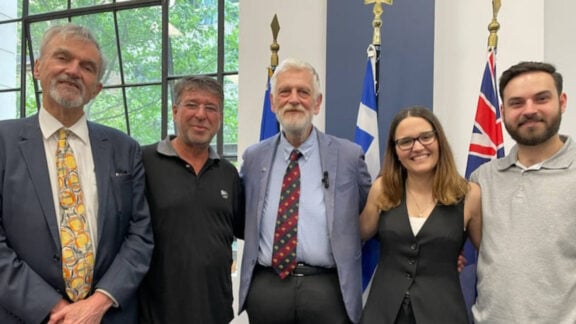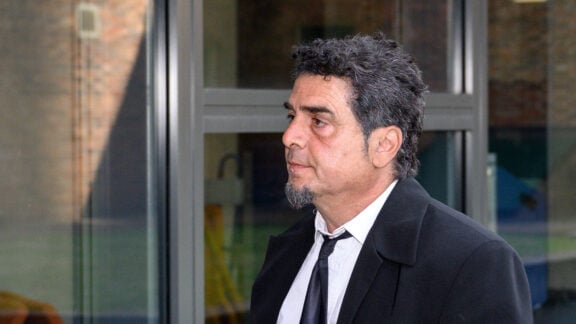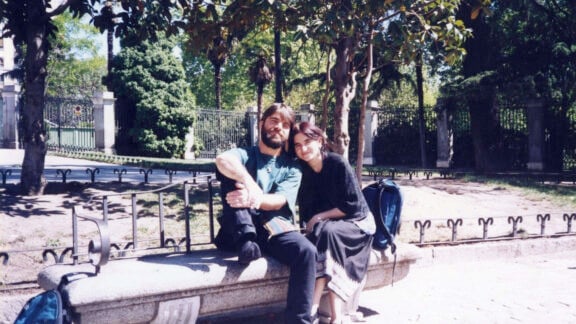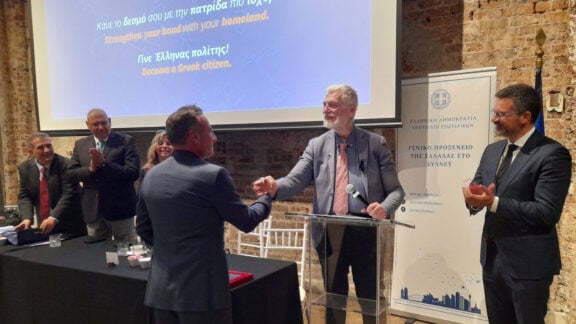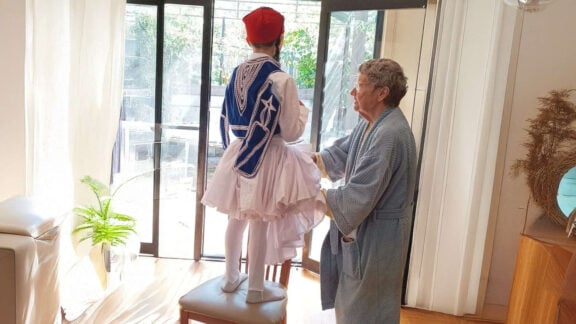There is no shortage of amazing museums to visit on your trip to Greece. The rich history of Greece and its part in the development of civilisation is reflected in the collections of these institutions. The new Acropolis Museum is obviously a must see for any first time visitor.
But I have always been fascinated to visit a collection off the well-worn beaten track to Greece’s museums. I’m referring to the Archaeological Museum of Piraeus.
Coming to this many harboured location in April I am reminded of the important role it played in the Greek campaign of 1941. It was to this port that hundreds of Allied ships sailed to disembark the soldiers and military materials to aid Greece as it faced the looming German invasion.

The photographic collection at Canberra’s Australian War Memorial depict young sailors peering out of their ships onto the soldiers just landed onto the harbour side. The port is referred to in the many memoirs, letters and diaries created by the Anzacs and other Allied troops as they arrived. Sadly the photographs and accounts also include details of the effective destruction of the port in early April by the German bombing of the Allied ammunition ship Clan Fraser at anchor in the harbour. A veteran witness account of the destruction is included in our Anzac The Greek Chapter documentary.
The port also contains the impressive Hellenic Naval Museum with its collection of restored naval vessels famed in Hellenic history, such as Admiral Kontouriotis’ flagship the battleship Averof and the Greek naval destroyer Velos famed for its protest in May 1973 against the dictatorship of the Greek Junta. These connections to Greece’s modern history are a mere extension to the city’s important role in Greece’s long history stretching back to the Classical era and beyond.

Archaeological evidence dates settlements at Piraeus from the Middle Bronze Age, with its strategic location and three ancient harbours – Kantharos, Zea and Mounchia – ensuring its function as the main port city of Athens. It would achieve prominence with the construction works begun by Themistocles in 470-460 BCE and completed by Kimon and Pericles over the ensuing twenty years. The most prominent of these were the thick stone outer walls of the city, estimated to have originally extended over 13 kilometres – of which some 2.5 kilometres survive to this day – and the Long Walls that provided protected connection to Athens.
These signify the growing importance of Piraeus to the growing Athenian Empire, the city providing Athens with its key commercial trading and naval centre, eventually its harbours housing some 372 ship-sheds and the Arsenal of Philo, the storehouse for shipping equipment and supplies. The city was also home to many sacred spaces, such as Sanctuary of Artemis (part of which can be seen today in the foundations of the modern day Yacht Club of Greece in Piraeus), a Sanctuary of Zeus, a large theatre dedicated to Dionysos and an Asklepieion for healing.

This great age would be replaced by its role as one of the chain of Macedonian fortresses linked to control mainland Greece and finally the city would decline following the destruction of the city by the Romans in 86 BCE. The Piraeus Archaeological Museum captures these eras of the city’s proud ancient past in its small but impressive collection.
The modern Museum building was erected in 1966 and is situated adjacent to the site of one of Piraeus’ ancient amphitheatres – the Hellenistic theatre of Zea – the foundations of which have been excavated and are open to visitors. The Museum collection is displayed over two floors in a series of rooms.

The entrance is dominated by some of the important items from Piraeus’ naval past. The first thing that strikes one is the bronze ram in the form of a trident from the bow of an ancient trireme, with its sharp front and ribbed body created for maximum destruction. Above is the once coloured marble eye that would have been fitted to a trireme as well as a stone pyramidal ships anchor or weight.
Continuing into one of the large display rooms one is struck by the great funerary monument of Kalithea that dominates the collection displayed here. Surrounded by various individual funerary steles, this represents the climax of funerary luxury in 4th century BCE classical Greece. The temple-like structure stands atop a pedestal with a surrounding once-coloured frieze depicting the mythological Amazons, with the central temple above containing three sculptures – the son, the father and a slave – bordered by two Ionic columns. Originally located next to the Long Walls, the model for this monument is thought to have been the Mausoleum of Halikarnassos – the inspiration for our own Shrine of Remembrance in Melbourne.

One particularly interesting funerary stele which is displayed near the monument is that created for a fallen warrior, Panchares the son of Leochares. Impressive in size and simply decorated, this memorial adorned the grave of one of the Athenian soldiers killed at the battle of Chaironeia in 338 BCE. Tall and thin, it is decorated with rosettes, a palmette and a loutrophoros vessel, the central image depicting the final battle scene of the warrior with the hero-hoplite confronting a Macedonian cavalryman. A sombre and appropriate memorial to a fallen soldier.
The collection also includes an impressive display of pottery (including that from children’s graves), funerary memorials, statues (including that of the funerary Lion of Moschato) and a Roman era display with large statues, including a colossal representation of Emperor Hadrian. The collection also contains a number of impressive bronze statues to the Gods – an archaic-era Apollo, one to Athena and another to a younger Artemis.

However for me it is the other bronze Artemis at the Museum that steals the show. The city was once home to a Temple to Artemis that stood on the hill above the harbour of Housed on the Museum’s second floor, the great bronze sculpture draws you to its gaze. With its right arm outstretched and lowered left arm – which once held the huntress’s bow – it is the coloured enamelled eyes that immediately attract my attention. They are a reminder that colour was an essential element in much of classical Greek art, such as the formerly coloured friezes of the Parthenon.
The delicate folds of her dress and waves in her hair swept back from her face show the detailed work involved in its creation. Some writers attribute her hairstyle to known heads of Sappho the poet. As one writer has written this Artemis is an older, more experienced, mature figure than many other depictions of the Goddess of the hunt. Scholars have attributed this more robust Artemis to Euphranor, the sculptor and painter of the 4th century BCE, who sought a return to more earthy figures. The sculptor is recorded as stating that while his creations looked like they had fed on meat, those of some others looked like they had only ate roses.

As I stand before her, I can’t but reflect on Peter Corlett’s choice of inspiration for our Lemnos Gallipoli Memorial nurse figure. The Australian nurses who came to Lemnos in 1915-16 were indeed experienced and professional women. Many had years of medical and surgical experience behind them. They were hardy and able to cope in the exposed hospital camps established on the Island. They continued to serve as many of their male colleagues were felled by illness and repatriated off the Island. What better inspiration for a face to symbolize the strength of these women than that of the Piraeus Artemis.
I know I speak for all on our Lemnos Gallipoli Commemorative Committee and our many supporters that Peter Corlett completed a wonderful work in the Lemnos Gallipoli Memorial in Albert Park. But in his creation of the nurse figure he has taken his work to another level. Viewing the photographs and stories of the Australian nurses on Lemnos, Peter was drawn back many years to when he stood before the Piraeus Artemis. What a wonderful combination of inspiration to draw upon, referencing the Anzac and Classical Greek traditions, in his beautiful creation. In so doing, Peter has gifted Australia and Greece the perfect symbol of the Hellenic link to Australia’s Anzac story.

*Jim Claven OAM is a trained historian, freelance writer and published author, his most recent publications including Lemnos & Gallipoli Revealed, Grecian Adventure and From Imbros Over The Sea. A regular contributor to Neos Kosmos, Jim is Secretary of the Lemnos Gallipoli Commemorative Committee and Associate Producer of the 1941 Greek campaign documentary Anzac The Greek Chapter. *He has been researching the Hellenic link to Anzac for many years and can be contacted via email – jimclaven@yahoo.com.au

